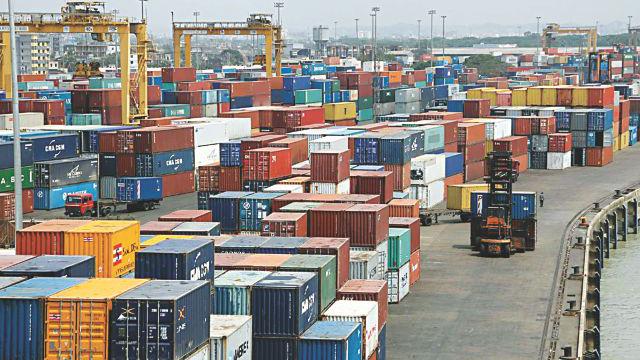Published in The Financial Express on Sunday, 08 April 2018
New fight for market access
Asjadul Kibria

Achieving the eligibility of graduation from the status of a Least Developed Country (LDC) also brings some big challenges for Bangladesh. One of such challenges is availing market access facility in the post-LDC era when the country will be labelled as developing one.
This year Bangladesh formally becomes eligible to graduate from the LDC category. The country has fulfilled the benchmarks for graduation. The United Nations has officially recognised the eligibility. For the next six years, Bangladesh has to maintain its present performance level, and if it succeeds, the country will be formally declared as non-LDC in 2024. The trade-related benefits including market access facilities will, however, continue for another three years. This is to say, the country will enjoy the existing market access benefits till 2027.
Tariff-free and low-tariff market access facilities in the developed and some developing countries immensely benefited Bangladesh. The country availed the benefits of being an LDC. Multilateral trade regime within the framework of the World Trade Organisation (WTO) allows LDCs to get tariff-free market access. It also keeps these countries outside of the stringent trade rules.
Currently, Bangladesh is enjoying tariff-free market access for 90 per cent to 100 per cent products in all the developed countries except the United States. The tariff-free access is, however, subject to complying rules of origin. For instance, having only 25 per cent local value addition, any Bangladeshi products except dairy, eggs and poultry can enter into Canadian market without any duty. This is the most LDC-friendly rules of origin so far allowed by any developed country. Some developing countries like China and India also allowed tariff-free market access to various products.
Zero duty facility, needless to mention, makes Bangladeshi products more competitive. It also puts Bangladeshi producers and exporters at an advantageous position over major competitors from developing countries. So, exports have been increasing gradually. Country’s current annual earnings from merchandise export stands at around $43.50 billion (in FY17). Besides, exports account for around 15 per cent of the country’s Gross Domestic Product (GDP). This also reflects the wider external-orientation of the country.
Now, what will happen after 2027? An estimate of the Centre for Policy Dialogue (CPD) showed that Bangladeshi products would face additional tariffs of about 6.7 per cent in the post-LDC era on an average. As a result, possible export loss might be US$ 2.7 billion. CPD estimate further added that the impact would be most adverse in case of exports to the European Union (EU), where 97.8 per cent of Bangladesh’s exports currently enter on a tariff-free basis. In this market, Bangladeshi goods would face additional tariffs of 8.7 per cent, while in Canada the rate would be 7.3 per cent. Again, advanced developing countries like China and India have also allowed tariff-free access to Bangladeshi products. These preferential benefits will also not be available.
Against the backdrop, renegotiation with the trading partners through bilateral, regional and multilateral approach is critical. On bilateral basis, the primary option for Bangladeshi is signing Free Trade Agreement (FTA) with these developed and developing countries to retain preferential market access. But, negotiating bilateral FTA with the developed countries is tough. Most of the FTA structure goes beyond trade in goods and includes trade in services, the obligation for intellectual property rights and labour rights.
Multilateral negotiation through the WTO system is still a better approach for Bangladesh. But the future of the WTO, unfortunately, remains uncertain, and the rise of plurilateral trade negotiations will be there. So, the country needs to set its trade negotiation strategy.
Bangladesh is already actively involved with three regional trade blocs. These are SAFTA, BIMSTEC and APTA. The country is getting some tariff benefits under these regional trade blocs. As a developing member of the blocs six years later, other developing countries will consider Bangladesh as per. So, preferential trade benefits may be more difficult to attain.
Moreover, in the post-LDC era not only tariff but also Non-Tariff Measures (NTMs) will become a matter of concern for Bangladesh. Different countries are gradually adopting tougher standards of products to protect human health and natural environment. Some of these NTMs, though compatible with the WTO rules and regulations, may turn into Non-Tariff Barriers (NTBs) backed by protectionist intent of the importing countries. So, dealing with these NTMs is quite challenging.
Bangladesh has been trying to develop its capacity to deal with NTMs, especially in South Asia for the last couple of years. This effort needs to be intensified as NTMs are increasingly getting prominence in global trade. A brief note prepared by South Asian Network on Economic Modelling (SANEM) in this regard suggested an action plan under the country’s trade policy to deal with NTMs as well as NTBs. The research organisation observed that many of the problems of the so called NTMs and NTBs originate at home rather than in the export destination countries due to weak infrastructure, lack of human resources and various procedural obstacles.
To overcome the challenges of tariff and non-tariff barriers in a post-LDC era, preparation of the country’s businesses is critical. The export-oriented sectors have long been used to get incentives, subsidies and tax benefits. The big the sector, the powerful it is in extracting incentives. The Readymade Garments (RMG) is the best example. Even after three decades of thriving, the sector still keeps demanding incentives now and then. After shedding the LDC identity, Bangladesh will not be allowed to continue with such generous incentives or subsidies. Any such benefit may spark trade retaliation from the competitors. Country’s trade policy makers and businesses need to understand the long-term implication of subsidies and incentives.
Entering the post-LDC era means racing into a more competitive global market. To prevail in this competitive regime, strengthening domestic capacity is a key tool. Success in the new fight for market access will also depend on capacity building.



